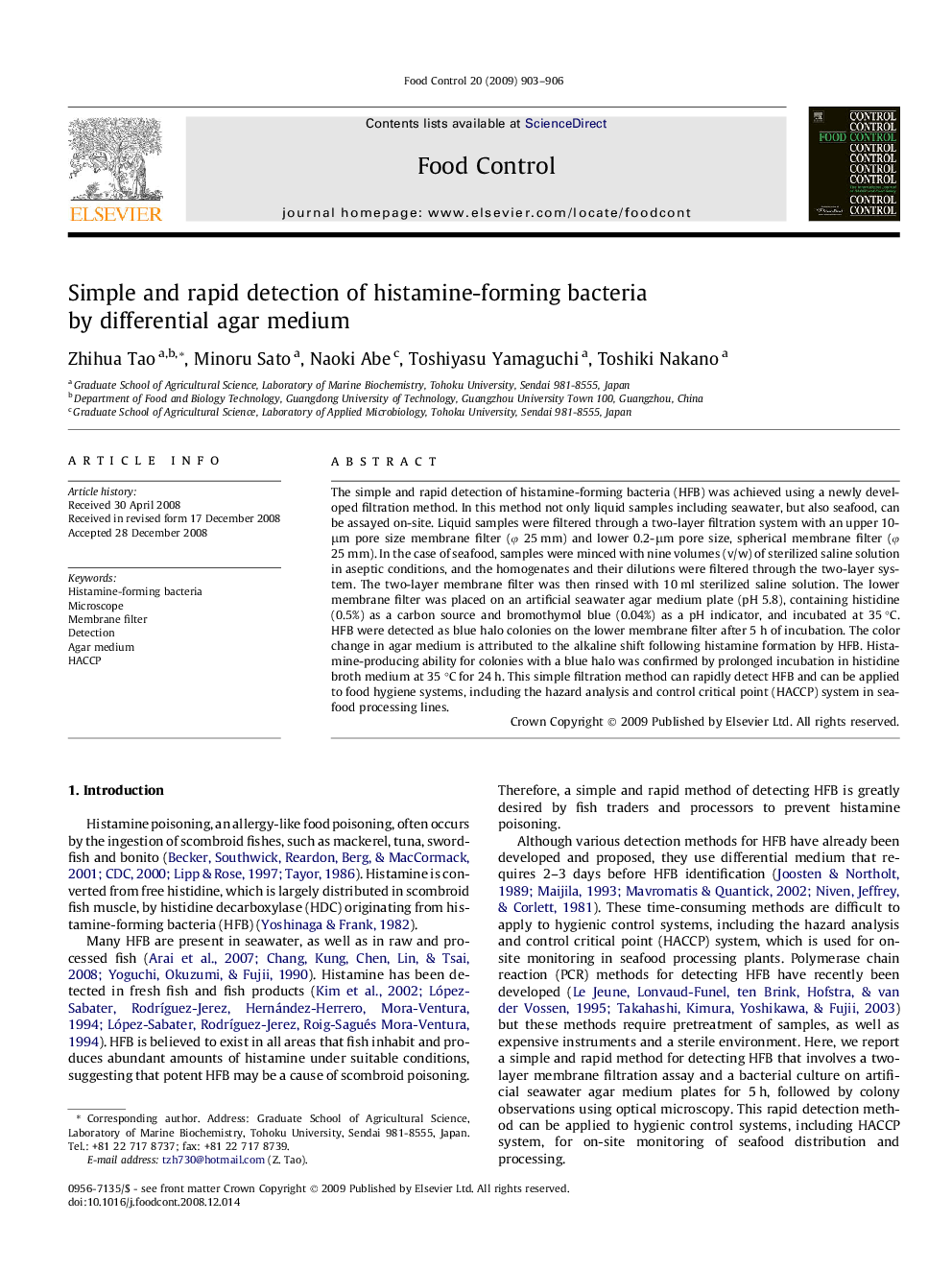| Article ID | Journal | Published Year | Pages | File Type |
|---|---|---|---|---|
| 4560175 | Food Control | 2009 | 4 Pages |
The simple and rapid detection of histamine-forming bacteria (HFB) was achieved using a newly developed filtration method. In this method not only liquid samples including seawater, but also seafood, can be assayed on-site. Liquid samples were filtered through a two-layer filtration system with an upper 10-μm pore size membrane filter (φ 25 mm) and lower 0.2-μm pore size, spherical membrane filter (φ 25 mm). In the case of seafood, samples were minced with nine volumes (v/w) of sterilized saline solution in aseptic conditions, and the homogenates and their dilutions were filtered through the two-layer system. The two-layer membrane filter was then rinsed with 10 ml sterilized saline solution. The lower membrane filter was placed on an artificial seawater agar medium plate (pH 5.8), containing histidine (0.5%) as a carbon source and bromothymol blue (0.04%) as a pH indicator, and incubated at 35 °C. HFB were detected as blue halo colonies on the lower membrane filter after 5 h of incubation. The color change in agar medium is attributed to the alkaline shift following histamine formation by HFB. Histamine-producing ability for colonies with a blue halo was confirmed by prolonged incubation in histidine broth medium at 35 °C for 24 h. This simple filtration method can rapidly detect HFB and can be applied to food hygiene systems, including the hazard analysis and control critical point (HACCP) system in seafood processing lines.
